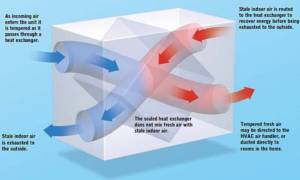We like air recovery ventilation systems. It’s like leaving the windows open year-round without all the heat loss and pollen from the outside coming in. Air recovery systems are broken down into two distinct types: Heat Recovery Ventilation (HRV) and Energy Recovery Ventilation (ERV). An experienced HVAC professional should guide you to select the best fit for your needs. For the most part in New England and HRV system is most applicable.
How heat recovery works.
Heat Recovery Ventilators reclaim energy from exhausted stale indoor air to temper incoming fresh air – heat is retained during cooler seasons and removed during warmer seasons. These systems capture about 70 percent of the energy already expended to temper incoming air. HRV systems are designed to be ducted, whole-house solutions. They will meet ventilation needs based on square footage of the structure and maintain recommended air changes per hour.
A Heat Recovery Ventilator is designed to provide fresh air into a building while exhausting an equal amount of stale air. During the winter months, the incoming cold fresh air is warmed by utilizing the heat recovered from the stale air before it is exhausted to the outdoors. During summer months when the indoor space is air conditioned, the Heat Recovery Ventilator will help in cooling the incoming fresh air with the stale air that is being exhausted. These systems capture about 70 percent of the energy already expended to temper incoming air.
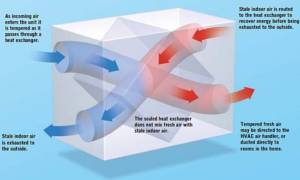
How energy recovery works.
Energy Recovery Ventilators are typically recommended for use in warmer climates where it is desired to remove humidity from incoming fresh air. While not a dehumidifier, ERV systems transfer moisture from incoming, humid air to the stale indoor air that is being vented to the outside.
An Energy Recovery Ventilator is designed to provide fresh air into a building while exhausting an equal amount of stale air. An ERV is designed for use in warm humid areas with heavy air conditioning use. The ERV will transfer both sensible and latent heat from the incoming fresh air to the outgoing stale air thereby reducing the load (due to ventilation) on the air conditioning system. ERVs are not suitable for climates where the temperature drops below 25°F.
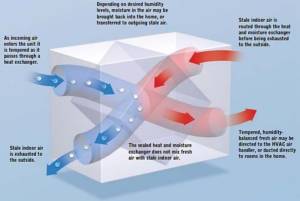
HRV Installation
The HRVs and ERVs must be installed where the ambient temperature is always over 50°F. These units can be installed with their own ductwork or connected to a forced air system.
Attic – If your unit is installed in the attic, it must run continually during winter, in order to prevent condensation build-up in the ducts. When outside temperature is very low, you can set the unit in recirculation mode to prevent air too cold entering the house.
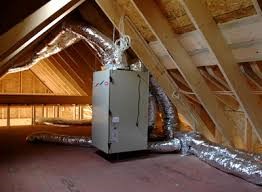
Basement – Homes with a central air handler and existing ductwork can oftentimes attach the HRV to their existing forced air furnace or HVAC system.
For homes without an air handler, the HRV can be installed in the basement as a stand-alone ventilation system. Ducting to the rooms that you want ventilated is required.
A video showing an example of an HRV standalone installation in a basement:
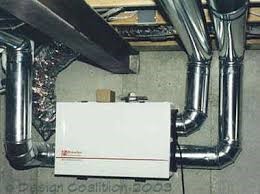
We recommend professional installation of HRV systems. Budget $3-5k including ductwork.


